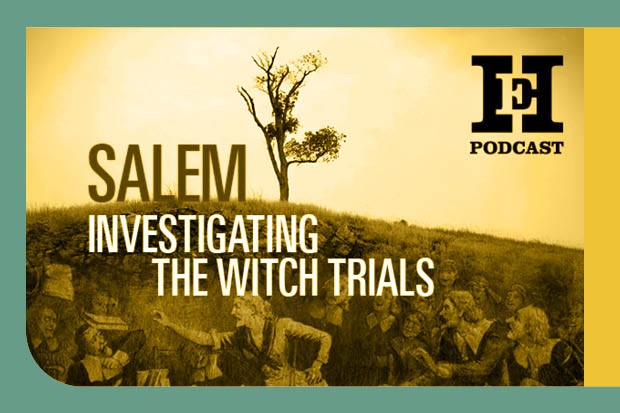Week One – What is a witch?
Professor Marion Gibson: I've been fascinated by witches and their history for over a quarter of a century. When I first read accounts of witch trials in 16th-century England, I immediately wanted to know more about the accused people: often ordinary villagers, poor and illiterate people, women who had little power in their societies. I also wanted to know about their accusers. While some were wealthy and well-connected, others were just as vulnerable as those they accused.
I wondered why so many people would be accused of an impossible, magical crime and why some of them confessed they were indeed witches. Why were so many women? Why were they so harshly punished if found guilty?
This week, I focus on what "witch" means, how it was defined and by whom. I also explore what witches were thought to look like and who they might have been in reality.
Week two – Demonology
Professor Marion Gibson: In this week's talk I focus on the learned conspiracy theory called “demonology”, which framed this basic idea of the witch and turned it into a potent driver of witch trials.
It was one thing to suspect your neighbour of harming fellow villagers by witchcraft, but what if you thought witches were working together to harm humanity itself, across whole continents? What if you thought witches were Devil worshippers rather than simply nasty-minded neighbours? What if you regarded them as dangerous enemies of God?
My video lecture looks at these big ideas of demonology and explores why some churchman and magistrates believed in it so fervently that they began mass witch trials.
Week three – witch trials
Professor Marion Gibson: This week, we move from theory to practice, and will be looking at some examples of how suspected witches were tried in the 16th and 17th centuries. There were different trial procedures across all the different jurisdictions of Europe and North America, but we'll be focusing on a couple of these in England and in Massachusetts.
First, we'll look at images of the famous Salem witch trials of 1692 and think about what it would have been like to have been questioned by magistrates and then sent to the Salem court. We'll see how the legal officials altered standard court procedure and what effect that had.
Then we'll look at other types of 'trial' suspected witches might undergo, with images of the swimming test that was sometimes the precursor to a court room trial. What did people think they were doing when they 'swum' a witchcraft suspect? How was that organised and what happened during and after this horrible public ordeal?
Week four – witches in popular culture
Professor Marion Gibson: This week we explore the legacy, or afterlife, of witch trials in contemporary culture.
Stories about witches and witch trials often feature in modern films and TV shows, on social media and in the press. The idea of the witch remains as relevant as ever, despite many changes in the concept and its meaning. While in some places people are routinely tried as witches, and witchcraft is represented as a real threat, elsewhere the witch has been reimagined as a figure of fantasy, empowerment or glamour. Meanwhile, the idea of the witch hunt has become a shorthand phrase in western societies suggesting unjust persecution.
For women and girls in these societies, witches are often seen as symbols of freedom and power. They are linked with the feminism of the 20th and 21st centuries, which brought greater acceptance of women's potential in the workplace, and in cultural and political life. Reclaiming the witch in this context meant rejecting images of sin and criminality associated with her and replacing them with ideas of fulfilment and agency.
For other people, too, this empowered witch is attractive: witches are associated with modern religious movements such as Wicca.
































